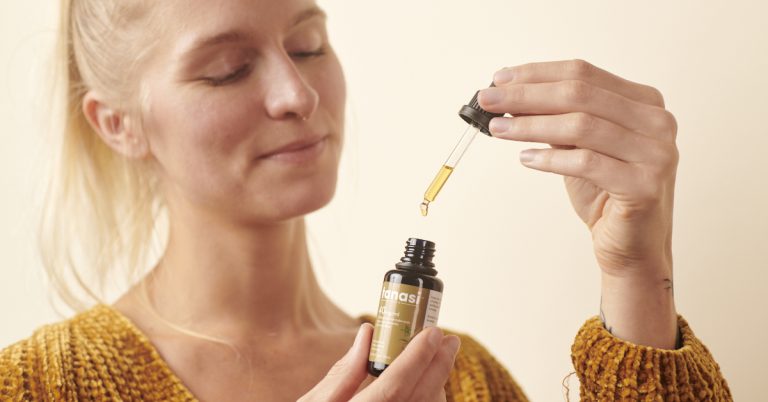Your Guide to Plants with Trichomes
Posted on July 16th, 2021
It’s common to see plants growing in the soil around you, but you may not have realized that there are substances that grow on plants as well. One example of this is trichomes. Plants with trichomes can regularly be seen in the wild.
Why do plants have trichomes? Are trichomes beneficial to plants, or can they harm plants. Below, you’ll find answers to all of your most important questions about trichomes.
What Are Trichomes? 
Trichomes are a type of outgrowth that can be found on many types of plants, including cannabis. From a distance, these appendages may look like hair or frost. It’s not unusual to see the leaves of plants completely covered in trichomes.
Examples of trichomes include lichen, protists, and algae. Although the size of trichomes can vary, the ones found on cannabis plants tend to be very small in size. Trichomes have their own life cycle that is distinct from the plants that they grow on.
At first glance, trichomes may seem like a threat or contaminant that could impact the health of a plant. Thankfully, that isn’t the case. In fact, they can be highly beneficial to plants, and seeing them grow is a positive sign. Growers should make sure that they are capable of recognizing trichomes so that they do not do anything to damage them.
What Is their Life Cycle?
In most cases, the life cycle of trichomes will be aligned with the life cycle of the plant that it is growing on. Trichomes often form on plants as they begin to flower. Once the trichomes are fully formed, they can transport plastids and vacuoles.
Trichomes are fragile and can easily be damaged. Exposure to the elements can cause trichomes to deteriorate rapidly. Since there are essential oils housed within trichomes, these oils can actually help accelerate the aging process. Drying and curing plant matter can help to preserve trichomes for a longer period of time.
Why Do Plants with Trichomes Develop?
Since there are different types of plants with trichomes, not all of these outgrowths serve the same purpose. In many cases, trichomes can protect the plants that they grow on. There are many things that plants are vulnerable to, including UV rays and insects. Trichomes give plants a barrier of protection.
They also have a bitter taste that can serve as a deterrent to any animal or insect that might try to eat a plant. When a plant is covered in trichomes, it is also far less likely to form a fungus. Trichomes can even provide protection against the elements.
How Do They Function on Cannabis Plants?
Although cannabis plants are protected by the trichomes that grow on them, these appendages serve an additional purpose as well. As trichomes grow and develop, they produce cannabinoids. Those cannabinoids develop alongside terpenes, which are aromatic compounds that can enhance the plant’s smell, as well as enhancing its extracts’ effects in your body.
Since trichomes can protect and strengthen cannabis plants, growers often go to great lengths to protect these delicate outgrowths. Although trichomes are easily damaged, with the proper protection, they can grow, thrive, and greatly enhance the quality of cannabis plants.
What Are the Best Ways to Protect Plants with Trichomes?
Even though trichomes help to protect plants, it’s important for growers to protect them as well. It’s best to avoid areas that are overly humid or dry. The ideal moisture level for these plants is somewhere between 60 and 63 percent moisture.
It’s best to monitor plants closely to ensure that the trichomes do not come into contact with flowering cannabis buds. Since trichomes are so sensitive, the contact can cause them to burst. Avoid any unnecessary agitation so that the trichomes are not degraded or destroyed.
Typically, dry trimming is used when harvesting cannabis plants. To preserve the maximum amount of trichomes, however, it may be better to use a wet trimming method. That’s because many will fall of the plant when dry trimming is used. Wet trimming will preserve the outgrowths so that they can be safely stored.
Once the plant has been harvested, it will need to be cured. Curing will maintain the plants’ full potency. When curing plants, it’s best to avoid the use of plastic bags. Microplastic particles can damage trichomes and could cause many terpenes to be lost.
Are There Ways to Boost Plants with Trichomes’ Production?
Since trichomes can be so valuable to cannabis plants, many growers are interested in increasing overall production. Production levels will be elevated if the plants are kept in a cooler environment. Heat can keep resin from forming, which can lead to lower production levels overall.
A suitable grow environment will lead to heavier trichome production and healthier plants. Factors such as nutrient uptake, humidity levels, airflow, and light spectrum all need to be taken into consideration. Watering cycles can also have a significant impact on cannabinoid production.
It’s also important to harvest plants at the appropriate time. If the plants are harvested too early, there will be less essential oil and terpenes in the trichomes. If the plants are harvested too late, many trichomes will be lost. Trichomes should be harvested at the end of a plant’s bloom cycle as they start to lose their opacity. When trichomes are milky-white in color, the plant is ready to be harvested.
It should be noted that a higher quantity of trichomes is not necessarily ideal. Instead, it’s most important to focus on the health of the trichomes, particularly when the trichomes on the plant are larger trichomes, like capitate-stalked trichomes. Even plants with heavy trichome production could be lacking in potency, but if steps are taken to preserve and protect the trichomes, they will yield better results overall.
What Are Some of the Different Trichomes That
Can Be Found on Cannabis Plants?
There are several different outgrowths that are commonly seen on cannabis plants. While there are distinct differences between these trichomes, they all serve a similar function.
Capitate-stalked trichomes are the outgrowth that is most commonly found on cannabis plants. There are some types of trichomes that are microscopic, but these large appendages can easily be seen by the naked eye. Because of their large size, they are capable of producing a higher concentration of essential oils than other trichomes.
In contrast, bulbous trichomes are so small that they are difficult to see. These trichomes only consist of a few cells and can cover a space as small as 10 micrometers. Since these trichomes do grow on the surface of plants, it’s sometimes possible to see them up close in spite of their small size.
Capitate sessile trichomes fall somewhere in between these other two trichomes when it comes to size. They are large enough to consist of a head and a stalk. Even though they are significantly smaller than capitate-stalked trichomes, they are still large enough to produce significant quantities of terpenes and essential oils.
Although there are many plants with trichomes, they have a particularly significant impact on cannabis plants. Because these outgrowths produce valuable terpenes, they can greatly improve the quality and the potency of a plant. They are also capable of protecting plants as they grow, leading to a larger crop and superior flavor.
Since trichomes are delicate, it is necessary to take steps to protect them as the plant grows. By finding a suitable growth environment and using the appropriate methods when a plant is being harvested, growers will be able to enjoy all of the benefits that trichomes can deliver to cannabis plants.

Related Posts

Oct 29 2020
Tanasi GOLD: The New Gold Standard For What CBD Can Be
Read More →
Oct 21 2021
CBD Isolate vs Distillate: Which One Is Right for You?
Read More →
Oct 20 2021
Using CBD Cream For Foot Pain
Read More →
Oct 19 2021
What’s the Best CBD Candy?
Read More →
Oct 18 2021


